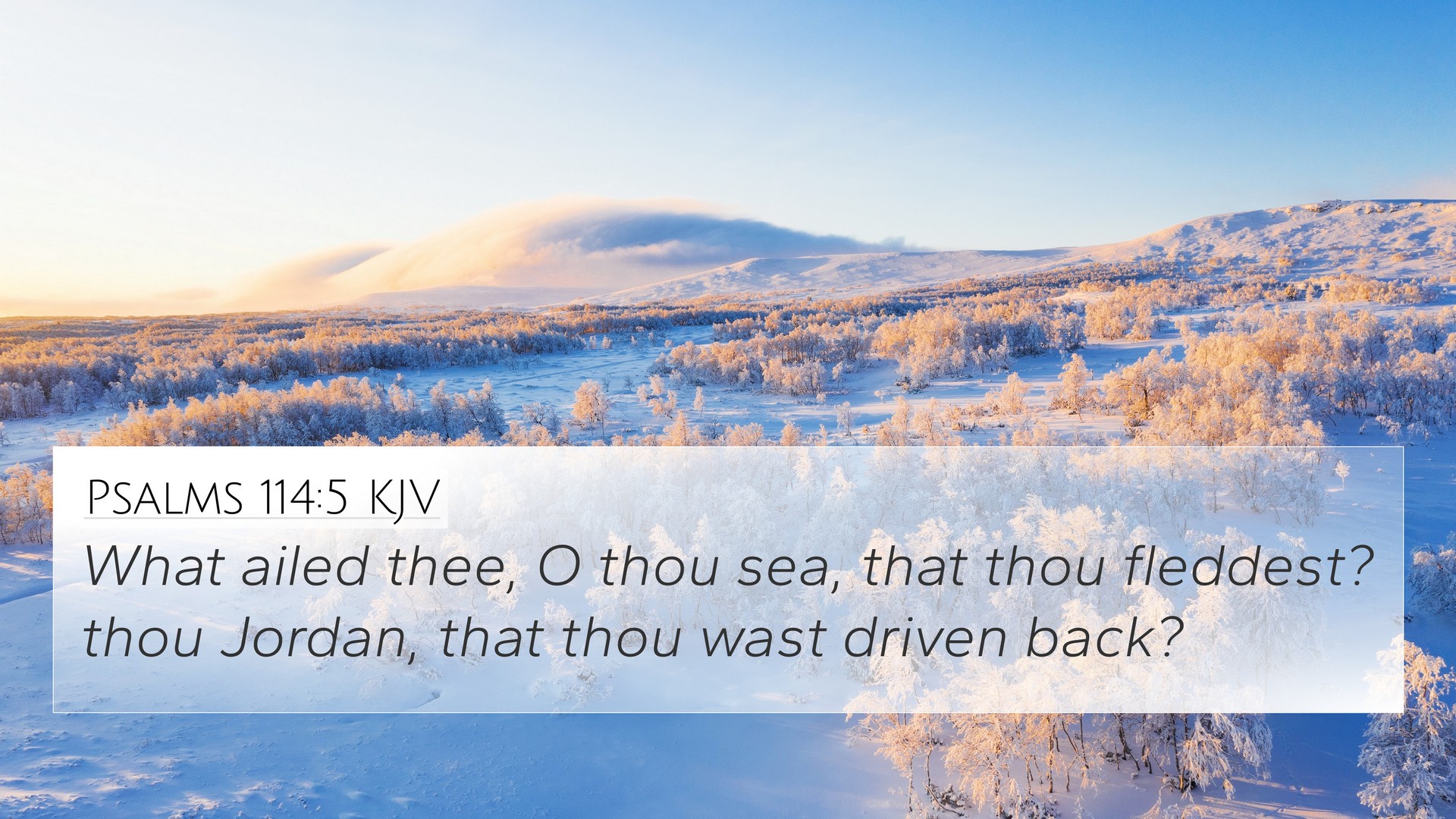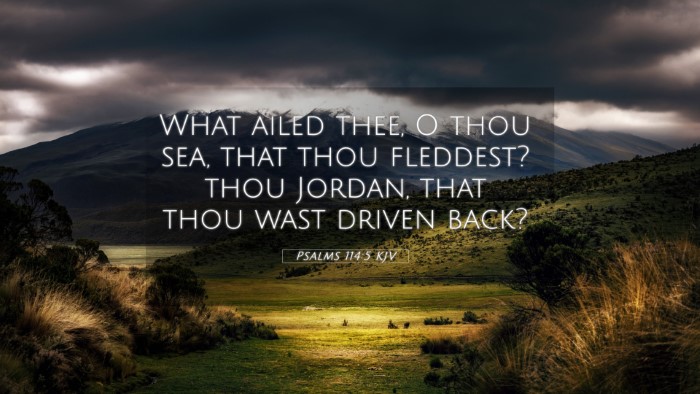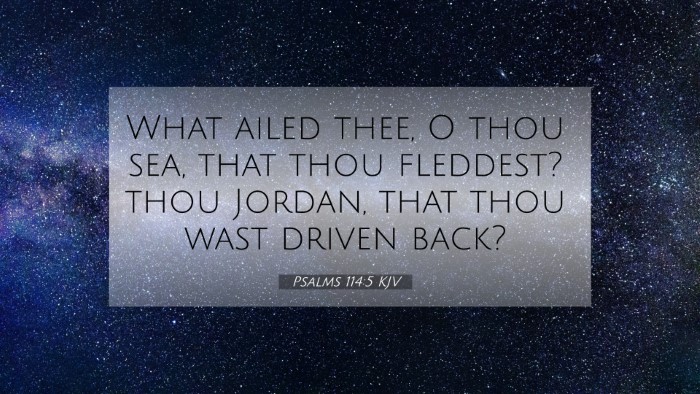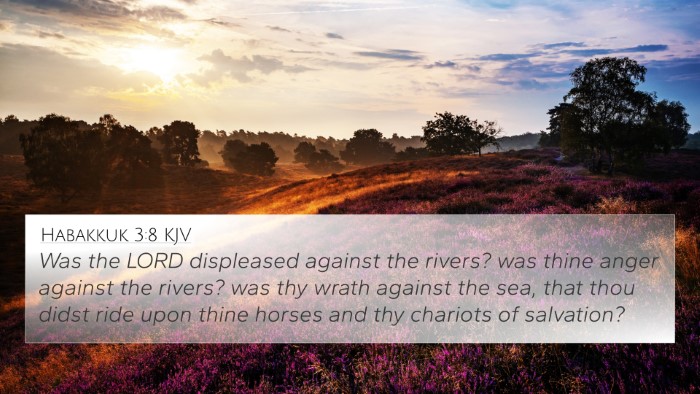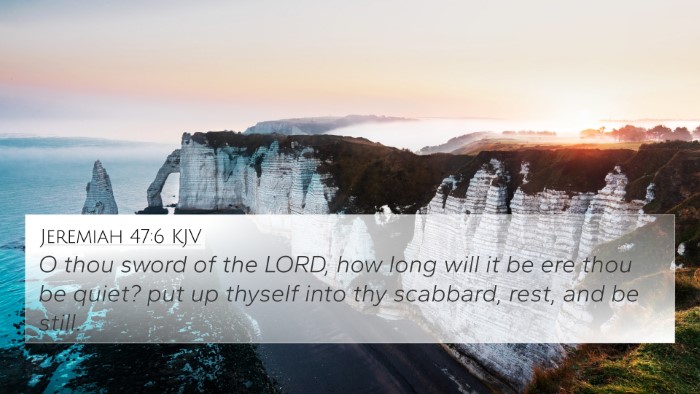This verse addresses the natural elements of the sea and the Jordan River, personifying them with questions that relate to their reactions in the presence of God.
Meaning and Insights from Commentaries
Psalms 114 is a powerful hymn reflecting the deliverance of Israel from Egypt and celebrating God’s miraculous power over nature. The specific verse 5 captures a moment of divine intervention, suggesting a sense of awe regarding God's authority over creation.
- Matthew Henry: He emphasizes the emotional context of this verse where the psalmist marvels at how the sea and the Jordan River seem to react fearfully when God approaches. This suggests that creation itself recognizes the sovereignty of its Creator.
- Albert Barnes: He remarks on the language of the verse, interpreting it as a poetic inquiry highlighting God’s might. Barnes connects the fleeing of the sea and the retreat of the Jordan to the historical moments when Israel crossed them, illustrating the divine presence that commands even nature.
- Adam Clarke: Clarke analyzes the crippling fear of the waters at God’s presence. He links this verse to historical accounts of Israel's crossing of the Red Sea and the Jordan, underscoring a significant theme of God’s power in delivering His people.
Connections to Other Bible Verses
This verse has several related biblical cross-references that underline its themes of God's intervention and the response of creation:
- Exodus 14:21-22: The parting of the Red Sea exemplifies God's commanding power over water.
- Joshua 3:15-16: The Jordan River parting for the Israelites further reflects the theme of divine authority and miracles.
- Habakkuk 3:8: This verse expresses God's wrath against the seas, echoing the psalmist's questions about their "fleeing."
- Matthew 8:26-27: Jesus calming the storm is an embodiment of divine power over nature in the New Testament context.
- Mark 4:39: This story parallels the theme of creation recognizing and obeying Christ's command.
- Romans 8:19-22: Discusses how creation waits eagerly for redemption, suggesting that it reacts to God's plans.
- Psalm 114:3: The previous verse describes the sea fleeing and indicates the magnitude of God's presence.
- Psalm 46:2-3: This passage speaks of the earth's uprooting, reinforcing creation's potential turmoil in the presence of God.
- Revelation 21:1: A vision of a new creation symbolizes ultimate restoration, continuing the theme of divine authority over nature.
- Psalm 78:13: Reminds us of God's power when He divided the waters; another historical account reflecting divine intervention.
Thematic Bible Verse Connections
The themes of deliverance and God's supreme authority over nature are evident throughout the Scriptures. This verse serves as a poignant reminder of the broader narrative of salvation, creation recognizing its Creator, and the profound impact of divine presence.
Tools for Bible Cross-Referencing
To effectively study verses like Psalms 114:5, consider utilizing:
- Bible Concordance: A valuable tool that provides a list of words and phrases used throughout scripture.
- Bible Cross-Reference Guide: These guides help to identify related Bible verses for deeper understanding.
- Cross-Reference Bible Study: Methods that focus on connecting various scriptures to paint a fuller picture of biblical themes.
- Bible Reference Resources: Comprehensive materials that aid in studying interrelated themes and concepts.
- Bible Chain References: A method for linking verses together based on thematic or doctrinal similarities.
Utilizing Bible Cross-References
Engaging with cross-references can significantly enrich one's understanding of scripture. By identifying connections between Old and New Testament scriptures, one can appreciate the continuity of God's message and the fulfillment of prophecies.
- How to find cross-references in the Bible: Various tools such as cross-reference Bibles and study guides make this process easier.
- Identifying connections between Old and New Testament: This approach reveals how themes overlap and develop across different times in biblical history.
- Detailed cross-reference between Gospels: Understanding parallels helps to clarify the teachings of Jesus and their implications.
- Bible verses related to specific themes: Creating thematic studies enables a focused exploration of biblical literature.
Conclusion
In conclusion, Psalms 114:5 is a powerful reflection on God's supremacy over nature. By utilizing cross-referencing techniques and exploring connections between Bible verses, believers can deepen their understanding of scripture. Engaging in these practices not only enhances personal study but also enriches sermon preparation and teaching.
